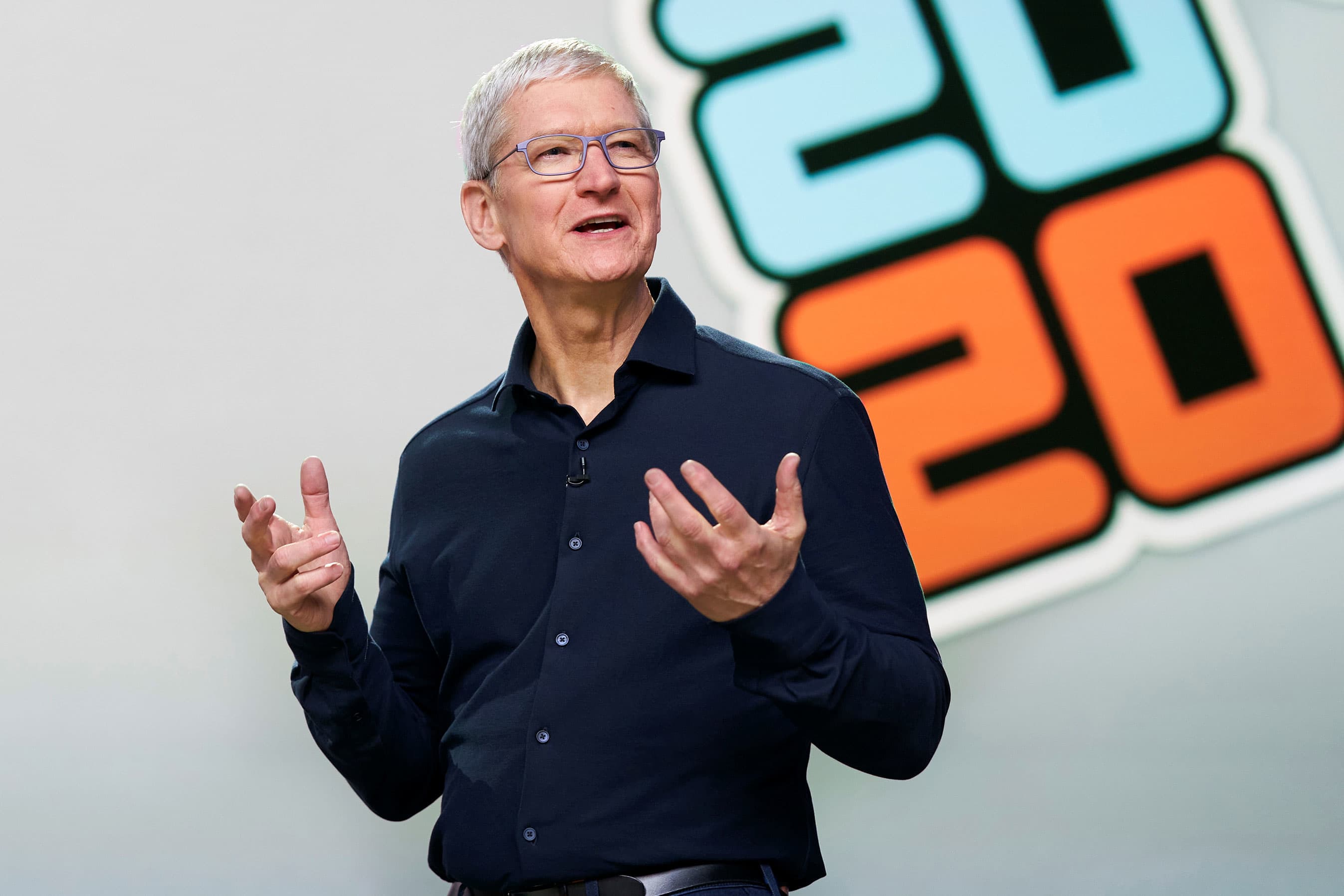Americans might not be able to take full advantage of the 5G iPhone

On Tuesday, Apple is expected to release its first iPhone models that support 5G networks.
Those iPhones will be able to tap into faster next-generation networks from Verizon, AT&T and T-Mobile for faster download speeds and stronger wireless connections.
In the United States, the carriers are still building their 5G networks. When the 5G iPhone comes out, depending on what bands it supports, some consumers looking for a sea change in terms of wireless speeds may have to wait until their carrier catches up with the phone’s capabilities.
5G speeds will be faster, but not necessarily fast enough to be a reason for upgrading until U.S. carriers finish building their networks. So far, 5G download speeds are just 1.8 times faster than 4G LTE speeds in the United States, according to data from Opensignal, a firm that tracks wireless network speeds around the world.
But in other countries with 5G networks that use what’s called “mid band frequency,” speeds are five times as fast as LTE, according to Opensignal.
5G is not a monolith. There are three different versions of 5G connections, which each use different radio frequencies and come with their own advantages and different speeds. Ultimately, carriers are aiming to build out all three different kinds of 5G in the next two or three years, but so far, no U.S. carrier has yet built all three different kinds of 5G into their commercial networks.
“In the U.S., when you see millimeter wave, and you see low-band, that isn’t 5G, that’s just two parts of 5G,” said Ian Fogg, VP of analysis at Opensignal. “5G will have mid band too. What we’re seeing in the US right now is version .9 or version 1.0, it’s going to improve a lot.”
That’s a lot of technical jargon to dig through, so let’s break down each type of 5G to make it as simple as possible.
High band, also known as millimeter wave, mmWave or ultra wideband
This is the fastest kind of 5G, but it has limitations based on the wireless frequency it uses. It can’t travel as far as other waves, which means that carriers need to build more stations to distribute it and it will primarily be aimed at dense, urban areas. Verizon has bet big on millimeter wave, which it calls ultra wideband, although it is currently only available in 36 cities, according to its website.
The advantage is that the max speeds from a millimeter wave connection can top 1 gigabit per second, according to carriers like Verizon. That will blow away current 4G LTE networks, potentially allowing users to download movies in seconds.
AT&T and T-Mobile are also currently building millimeter wave into their networks in major cities. So far, millimeter wave is a U.S.-based phenomenon, Fogg said, and other countries haven’t launched commercially available networks, only trials, although that could change if the new iPhones supports millimeter wave.
Mid band
Mid band is the most common kind of 5G around the world, but it has not yet been widely built out in the United States because carriers need the FCC to sell rights to specific wavelengths they need to operate the network. Auctions are scheduled for later this year and next year. Fogg said it is the “Goldilocks band” for 5G that will balance distance it can cover with significantly higher speeds that U.S. consumers will notice.
In South Korea, over 10% of wireless subscribers are currently on 5G, which means mid band in the country. Mid-band speeds can range between 100 to 300 Mbps, which is comparable to a cable broadband connection. In the United States, T-Mobile released commercially available mid-band 5G in some cities and states in September, using rights to wavelengths it got from the Sprint merger.
Low band
This is what advertisements from U.S. carriers boasting about their “nationwide 5G” coverage are referring to. It’s faster than 4G networks, but it’s the slowest kind of 5G. Its biggest advantage is that it provides the best range, and in the U.S., the wavelengths needed to operate it are already available to carriers.
Currently, AT&T and T-Mobile offer low band 5G in a lot of different regions and states. In T-Mobile’s case, it is already advertising that it is available in all 50 states. But users will see the least improvement in terms of speed with low-band 5G, and it may not be worth upgrading to a 5G phone if only low band is available. On average, the speeds won’t feel much faster than the 4G connection you’re used to.
Ultimately, carriers will offer all three kinds of 5G, and smartphones will be able to connect to multiple bands for better performance.
“We’re really right at the start of the 5G era. We’re seeing different U.S. carriers lead with one part of the 5G service,” Fogg said.
Eventually, carriers will offer service using millimeter wave in urban locations to provide very high speeds, mid band to cover the majority of area with good speeds and good coverage, and low band to reach large swaths of area.
An event like the 5G iPhone launch could also spur a wave of announcements from carriers around the world that they are expanding or turning on 5G networks. In countries like the U.S. and Japan where a large part of the population uses iPhones, having 5G iPhones on sale could build a critical mass of 5G users that prompt carriers to accelerate their network plans.